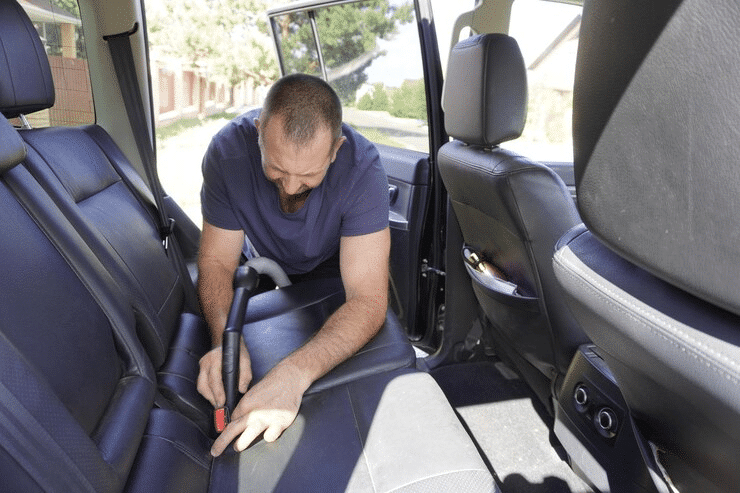
Seatbelts are lifesavers. They reduce the risk of fatal injury in car accidents by nearly 45%, according to the National Highway Traffic Safety Administration (NHTSA). However, in high-impact collisions, seat belts themselves can cause seatbelt injuries after a car accident, ranging from mild bruising to internal injuries and even organ damage. While wearing a seatbelt is essential, understanding the potential harm it can cause in a motor vehicle accident is equally important.
In this blog, we’ll explore how seatbelt injuries happen, their types and symptoms, and why legal support may be necessary if you’ve suffered harm in a motor vehicle crash in South Carolina.
Why Do Seatbelt Injuries Occur?
Seat belt-related injuries typically occur in moderate to high-speed collisions. The primary function of a seat belt is to restrain the body during a high-impact collision. This restraining force, especially from the lap belt or shoulder belt, can result in trauma to the body.
Factors increasing risk of injury include:
- Improper seat belt usage
- Wearing the belt too loosely
- Children or smaller adults using adult seat belts
- Pre-existing conditions
- Passenger vehicle occupants in pickup trucks or smaller passenger vehicles
Common Types of Seat Belt Injuries
1. Chest Injuries
Force from the shoulder belt or contact with the steering wheel can cause:
- Rib fracture or rib cage trauma
- Myocardial contusion or Pulmonary contusion
- Chest pain and chronic pain
2. Abdominal Injuries
Pressure from the lap belt may lead to:
- Abdominal trauma, abdominal abrasions, or abdominal pain
- Damage to internal organs like liver or spleen
- Intra-abdominal trauma, Intra-abdominal injuries, or internal organ injuries
- Bowel perforations or abnormal bowel movements
- Internal organ damage requiring emergency medical care
3. Spinal Injuries
Forceful restraint can result in:
- Spinal cord injuries
- Spinal fractures and loss of motion
- Chronic pain and muscle damage
4. Soft Tissue Injuries
These include:
- Soft tissue injuries such as bruises or skin abrasions
- Damaged muscle fibers
- Lasting neck pain, shoulder injury, or neck injuries
5. Seat Belt Syndrome
This term refers to a combination of:
- External bruising called seat belt sign
- Damage to internal structures or internal damage
- Presence of blunt force trauma or blunt intra-abdominal injury
Symptoms to Watch Out For
After a motor vehicle collision, watch for these signs of seatbelt-induced trauma:
- Abdominal pain, swelling, or bruising (especially the abdominal seatbelt sign)
- Difficulty breathing or chest pain
- Blood in stool
- Disorientation or loss of consciousness
- Numbness or bodily injury
Prompt medical evaluation in an emergency department is crucial, as underlying injuries can be serious.
Diagnosing and Treating Seat Belt Injuries

Medical professionals may use X-rays, MRIs, or CT scans for proper diagnosis of:
- Vascular injuries
- Broken clavicle or clavicle fracture
- Common type of seat belt injuries like chest injuries or abdominal injuries
Treatment may include:
- Physical therapy for loss of motion
- Surgery for organ damage or bone fracture
- Management of minor injuries to avoid critical injury
Legal Steps for Seatbelt Injury Victims
If you’ve suffered seat belt-related injuries in a motor vehicle, you may have a valid case. Here’s what to know:
1. Determining Liability
A negligent driver or vehicle manufacturer may be held accountable, especially in the case of a defective seat belt or poor design, such as design flaw in modern vehicles.
2. Filing Personal Injury Claims
You may seek compensation for:
- Medical bills and treatment
- Pain and suffering from soft tissue or internal injuries
- Lost wages or financial compensation
- Costs of dealing with chronic pain or permanent disability
3. Insurance Companies
Be cautious. Insurance companies may minimize payouts. Let your accident attorney handle communication and accident claims.
Protecting Yourself from Seat Belt Injuries
Reduce your risk of injury by:
- Using the lap portion correctly
- Keeping the shoulder belt snug
- Avoiding the front-seat passenger seat for children
- Replacing belts post-accident
- Following active restraints and passive restraints safety standards
Final Thoughts
While seat belts save lives, the potential for seatbelt injuries must not be ignored. These injuries can include everything from soft tissue injuries and abdominal injuries to life-altering spinal cord damage and organ damage. A thorough medical evaluation and the right legal options can make all the difference in recovery.
About Ted Law Firm
At Ted Law Firm. We proudly serve injury victims in Aiken, Anderson, Myrtle Beach, North Augusta, Orangeburg, Charleston, Columbia, Greenville and Summerville. If you’ve been injured due to someone else’s reckless or criminal behavior, our experienced attorneys are here to help you seek justice and recover the compensation you deserve. Let Ted Law Firm help you file a successful claim for emotional damages. Contact Ted Law Firm today for a free consultation. We’re committed to supporting families in their time of need.
